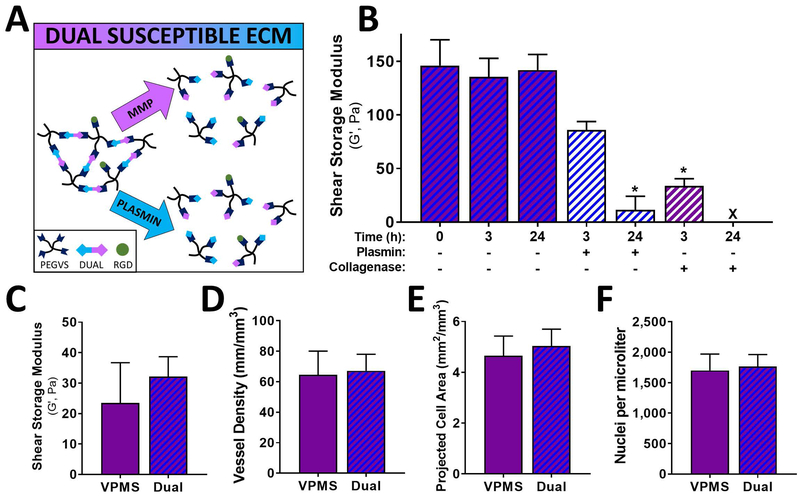Fig 5:
Hydrogels with crosslinks sensitive to either plasmin or MMPs did not enhance capillary morphogenesis. PEG-VS hydrogels were crosslinked with a concatenated peptide containing both VPMS and YKNR sequences and used to form scaffolds in which each crosslink was susceptible to either MMPs or plasmin (A). Dense PEG-VS hydrogels were crosslinked with the dual susceptible peptide, swollen in PBS overnight, exposed to indicated proteases, and at indicated times, characterized by shear rheology (B). EC-DF co-cultures were generated in intermediate-crosslinked (32 mg/mL PEG-VS) scaffolds crosslinked with either VPMS or dual-susceptible peptides (C-F). Network structure of these scaffolds, assessed by shear rheology, did not depend on crosslinking peptide (p = 0.36) (C). Vessel density, quantified after 7 d, was similar for VPMS and dual susceptible peptides (p = 0.65) (D). Cell spreading was estimated by projected cell area per volume and did not differ for VPMS and dual susceptible peptides (p = 0.11) (E). There were no differences in cell density after 7 d, measured by automated counting of DAPI stained nuclei per volume (p = 0.63) (F).

